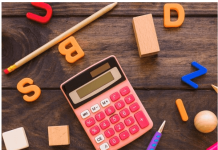Whether you’re learning Arabic, English, or Chinese, the basics of learning involves how to use adjectives to describe people or things in detail.
Mastering adjectives in the Arabic language comes down to two critical aspects, the first being the formation of the adjectives, and the second is the placement of adjectives.
This article aims to educate you on the fundamentals of both these aspects, so take one giant step towards achieving a firm grip over the language.
Contents
The Basics of Arabic Adjectives Formation
Arabic adjectives are the words that are used to describe or modify anything or people in a sentence.
There is a rule of thumb when using adjectives in Arabic; if the noun is definite, then the adjective must be definite.
These adjectives are made up of stative verbs. The verbs donate the status or condition, rather than an action or change.
The majority of the stative verbs have “I” or “U” as the second vowel. A stative verb having a “U” is for donating the permanent condition.
Unlike English, the adjectives in Arabic follow the noun they are modifying, which is much easier — you’ll discover this during your advanced online Arabic classes later on— because when you start with a noun first, you can easily modify the adjective that comes afterward. Like German and Spanish, the Arabic language has feminine & masculine adjective forms.
In the Arabic language, to form a feminine adjective from the masculine, you simply have to add “taa’ marbuta.”
The most common adjectives in Arabic are:-
- Beautiful in Arabic – Jameel
- Good in Arabic – Jayeed
- Happy in Arabic – Sa’eed
- Sad in Arabic – Hazeen
- Tired in Arabic – Mot’ab
- Delicious in Arabic – Latheeth
- Bad in Arabic – Saye
- Nice in Arabic – Lateef
- Cold in Arabic – barid
- Hot in Arabic – Harr
The Basics of Adjectives Placement In Arabic
The placement of adjectives in Arabic is different from the English language. As in English, the adjectives come before the noun, as in “Beautiful Girl.” The order is reversed in the Arabic language; it is fataah jameela, which means “Girl Beautiful.” Like in the English language, the adjective follows the noun in multiple aspects, such as gender and number.
Also, there is one crucial thing to know about adjectives and nouns in Arabic: both can be defined or undefined using the use of definite article prefix “al,“ If you’re talking about any other random girl.
On the flip side, if you’re talking about a girl who is known to the listener. Then, you’ve to use it; she is a beautiful girl,which is al-fataah al-jameela.
If you want to add one more adjective to describe something, then you’ve to add “wah,” like, and in between.
Apart from before the noun placement, the Arabic adjectives are also placed after their respective verb. For example, That top is New, isn’t it? Is he Afraid of ghosts?
Why Take Online Professional Arabic Classes?

Arabic language courses focus on the critical areas of grammar, vocabulary, pronunciation, lightning, reading, and writing. You’ll get the opportunity to interact with native-level language experts, which will ultimately give you the confidence to use it.
In this digital era, you have the freedom to take one-to-one Skype lessons or in-group classes at the time & place of your choice.








